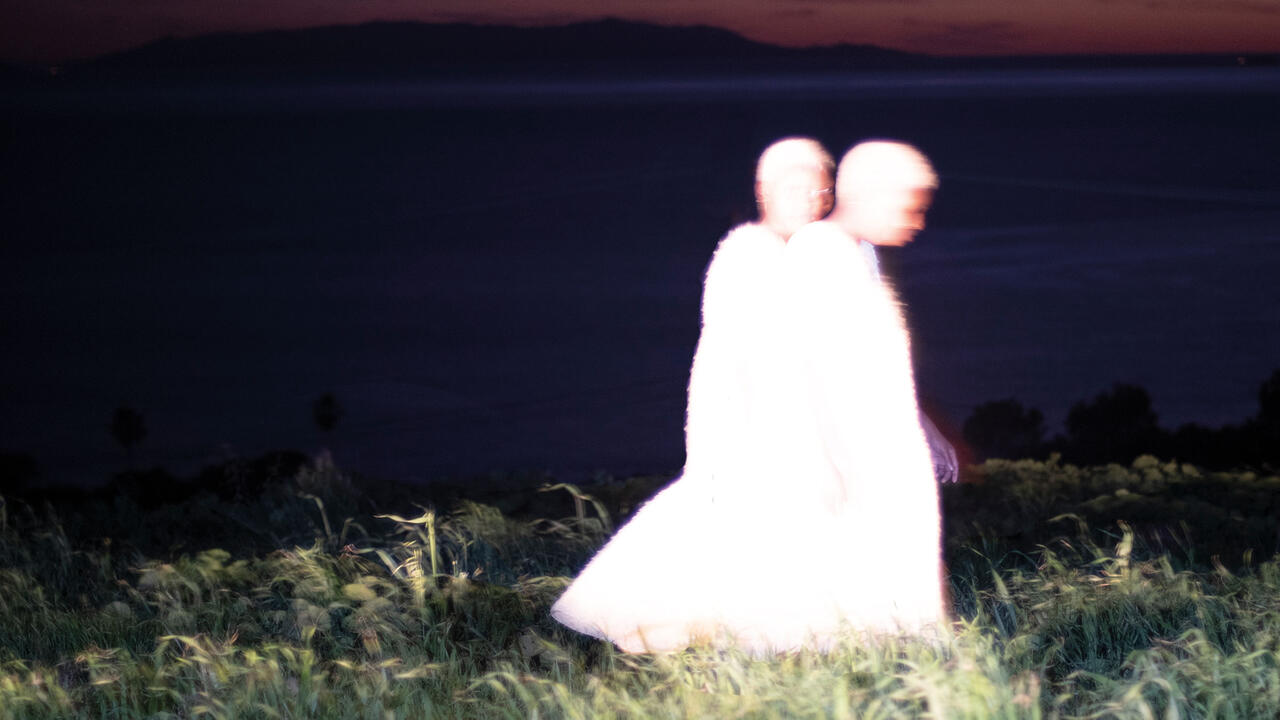Who’s the Real Ideologue? On Jordan Peterson’s Communist Art Collection
Why does the ‘men’s rights’ guru to the alt-right surround himself with Soviet-era memorabilia, which he doesn’t even class as art?
Why does the ‘men’s rights’ guru to the alt-right surround himself with Soviet-era memorabilia, which he doesn’t even class as art?

In the foreword to 12 Rules for Life: An Antidote to Chaos (2018), the Canadian culture warrior and ‘men’s rights’ activist Jordan Peterson’s self-help manual for wayward white men set adrift in a destabilizing sea of ‘postmodern identity politics’, the psychiatrist Norman Doidge describes Peterson’s home as ‘a semi-haunted house “decorated” by a delusion that had practically destroyed mankind.’ The delusion in question is communism: virtually every room of Peterson’s house in Toronto is covered in Socialist Realist paintings, part of an extensive collection of Soviet-era art and memorabilia that he has been obsessively amassing over the past two decades.
Peterson began collecting Soviet art around the year 2000, inspired, he says, by the psychologist James Pennebaker’s hypothesis that events begin to be perceived as ‘historical’ after roughly 15 years; the Berlin Wall had fallen 11 years prior and that was close enough. He started trawling eBay for relics of Soviet culture, which now belonged to history, and began purchasing them in droves. ‘I thought it was deeply ironic that the most free-market of platforms ever devised … could be used now to scavenge communist-era artefacts,’ he said in a live Q&A with his Patreon subscribers. A Cold War kid at heart, he couldn’t resist the symbolic triumph of ‘buy[ing] things like heads of Lenin on eBay – it was just too comical to pass up.’
Today, his collection includes some 200 Socialist Realist artworks, mostly from Soviet Ukraine (by the time he started searching, the work of better-known Russian Socialist Realists had already been snapped up). The desk of his home office, visible in any number of videos he posts on YouTube, is flanked by patriotic paintings of a strapping worker in a steel foundry and, on the other side, a group of young revolutionaries fearlessly accepting their fate as they are lined up for execution by a White Army soldier. Another wall is given over entirely to a massive painting of Lenin’s 1917 speech in St. Petersburg proclaiming the transfer of power to the Soviets. There are portraits of national heroes like the cosmonaut Yuri Gagarin, and idyllic depictions of collective farms: bountiful fields ploughed by shiny new tractors, young women dressed in white smocks, smiling and chatting while they work. An article in The New York Times was accompanied by a photograph of Peterson posing in his living room in front of a massive floor-to-ceiling canvas depicting Soviet soldiers surveying the aftermath of battle; on the adjacent wall, a poster shows a Young Pioneer boy in uniform with a statue of a youthful Vladimir Lenin rising up behind him.

As has been extensively unpacked elsewhere – most compellingly by Kate Manne in the Times Literary Supplement and Pankaj Mishra in the New York Review of Books – Peterson, a professor of clinical psychology at the University of Toronto, has managed to successfully pitch himself as a guru to a generation of mostly young, white, cisgendered men who, as Manne writes, ‘fear being surpassed by their historical subordinates … and losing their loyal service.’ He offers them fatherly wisdom and tells them that their resentments are justified, backed up by mystical invocations of archetypes and myths that illustrate the fundamental correctness of traditional social hierarchies. If the world has devolved into chaos, he argues, it’s because ‘postmodernist neo-Marxists’ have waged war on the forces of order and truth, attempting to covertly normalize their ‘murderous ideology’ by cloaking it in the rhetoric of human rights. First you let students dictate their own pronouns, next: the Gulag.
Peterson’s unlikely collection of Soviet art has become part of his own personal mythology, routinely proffered as evidence of his profound ethical commitment to understanding the forces of evil in the world. ‘I wanted to have these paintings around because I’ve been obsessed with totalitarianism and the human capacity for atrocity,’ he says. Living with them serves as a constant reminder ‘of the subjugation of art to ideology and the horrors of the USSR,’ as he put it in a tweet. Indeed, Peterson often invokes his collection when decrying perceived ideological abuses of art in the present. In a November 2017 tweet, he approvingly quoted the evolutionary psychologist Geoffrey Miller’s characterization of Yale University’s MFA programme as ‘the latest art school to abandon virtuosity, creativity, [and] aesthetics in favour of far-left activism’ in response to the announcement of the university’s new art and social justice initiative. ‘Remember Soviet Socialist Realism?,’ Peterson added. ‘I do. I have about 200 pieces, just to remind me what happens when art is subordinated to social justice.’
He brings it up again in a discussion of the Disney animated film Frozen (2013), apparently a work of radical feminist propaganda. ‘I’ve thought a lot about the difference between propaganda and art,’ he says. ‘My house is full of ideological propaganda from the Soviet Union.’ According to Peterson, a ‘true artist doesn’t have a political message’ and instead approaches art-making as a free-floating journey of creative discovery. By contrast, Peterson’s propagandist – whether a Soviet painter in the 1950s creating heroic pictures of collective labour or a contemporary film studio telling little girls that they can do just fine without a prince to save them – is a liar who distorts art’s purpose by using it as a vehicle to convey a preconceived political stance. (Hilariously, the example Peterson gives of a ‘true artist’ is Pablo Picasso, a card-carrying member of the French Communist Party.) However self-evidently stupid it may seem to surround yourself with things you profess to hate as a statement about how much you hate them, as Peterson has apparently done, it also conveniently serves as a rhetorical trump card: he knows nefarious leftist propaganda when he sees it, because he sees it every day.
In statements like these, Peterson relies on a Cold War caricature of Socialist Realism, casting it as uncreative hackwork forced upon artists who served as little more than cogs in a machine. Yet Socialist Realism was never the monolith that the Cold War view would have us believe. From the mid-1930s on, Soviet cultural policy dictated that art must be committed to the ‘true, historically precise representation of reality in its revolutionary development,’ but how to interpret this contradictory brief was the subject of ongoing debate and contestation throughout the entire Soviet era. No doubt Soviet artists faced extraordinary censorship, and there could be harsh consequences for falling on the wrong side of official tastes at a given moment. But contrary to the typical reading of Socialist Realism as a single totalitarian aesthetic imposed from above, Soviet artists played an active, and in many cases fully willing, role in determining how officially-mandated concepts like partiinost (party-mindedness) and narodnost (the spirit of the people) should be formally and materially expressed.

Then again, Peterson doesn’t actually hate his Soviet paintings at all: he frequently praises their classical compositions and display of skilled painterly technique. In the introduction to a 2011 exhibition of works from his collection at a Toronto gallery, he admiringly described Soviet painters as keeping ‘the traditions of European impressionism and realism alive throughout the 20th century, when formal artistic training in the West was deteriorating.’ Socialist Realism is held up as an example of the horror of art’s subordination to politics – ‘one of the worst of spiritual crimes’ – yet it also represents the preservation of an authentic artistic tradition, one abandoned by the ‘ideology-addled vipers’ who have infected contemporary art schools and institutions since the 1960s with their socially and aesthetically corrosive political agenda.
Peterson attempts to resolve this inconsistency by framing Socialist Realist works as the site of a mythical battle between the forces of art and ideology: if the best paintings in his collection manage to overcome the status of soulless propaganda, it is because the sheer power of individual artistic creativity has inevitably emerged triumphant to vanquish the bad spectre of communism. Of course, that power is only at work when it conforms with his worldview: contemporary artists who make use of their creative freedom to explore ideas around race, class, gender, and sexuality are condemned as propagandists and ideologues, corrupted by the ‘SJW PC invasion of art.’
For all Peterson’s insistence on art as an ineffable, transcendent force, he inevitably falls back on economics when asked to define art’s social value in positive terms. He knows art is important because ‘the most expensive artefacts in our society are artistic productions.’ Real artists are temperamentally just like entrepreneurs: unlike managers and administrators, the necessary grunts who keep the trains running on time, entrepreneurs are the creative engines of capitalist progress, ‘necessary to continue to generate new ideas.’ It’s a shame, he says, that conservatives tend not to appreciate art, because, in the end, artists are on their side; one only needs to look at their effect on cities to see it. Artists see a decaying urban landscape and recognize the possibility of beauty restored. When they arrive in a poor and ugly neighbourhood, they ‘civilize it so that other people can move in.’ In Peterson’s dismal view, artists’ complicity in the violence of gentrification’s displacement of marginalized people is elevated to a calling: artists find chaos and give it order, no matter who or what they have to erase in order to do it. Who is the real ideologue here?
Main image: Jordan Peterson in his home. Photograph: © Daniel Ehrenworth





















